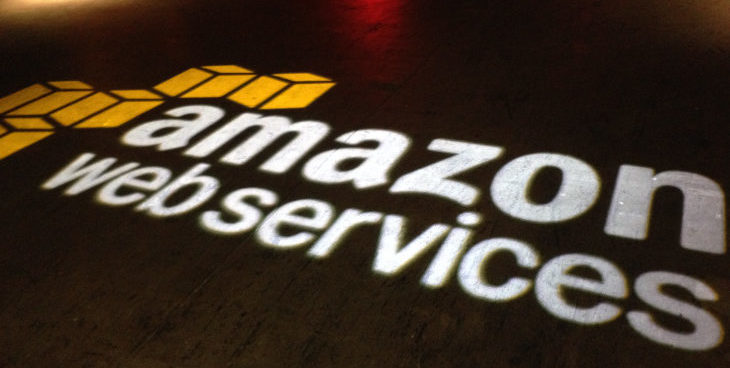M+E Connections

Amazon Reports Strong Q1 AWS Results, COVID-19 Initiatives
Story Highlights
Strong Amazon Web Services (AWS) results helped Amazon report stronger results than a year ago in the first quarter (ended March 31), during which the company unveiled multiple new innovative AWS initiatives, including ones that helped customers and communities deal with the COVID-19 crisis.
AWS revenue grew to $10.2 billion in Q1 from $7.7 billion a year ago, while AWS operating profit increased to $3.1 billion from $2.2 billion. Total Amazon revenue jumped 26% to $75.5 billion from $59.7 billion.
“Beginning in early March, we experienced a major surge in customer demand, particularly for household staples and other essential products across categories such as health and personal care, groceries and even home office supplies,” Amazon CFO Brian Olsavsky said April 30 on an earnings call.
The company saw “a lot of pickup” in Amazon Prime shopping benefits, he noted, pointing out that, amid the pandemic, Prime customers are “shopping more often” and for more items in each online order basket.
“We’re also seeing a lot more use of our video benefits and our digital benefits,” he told analysts, noting that, in March, first-time Prime Video viewers “nearly doubled” as more customers are staying at home. Video rentals also increased, he said.
Amazon launched Prime Video Cinema, a premium rental option in the U.S., U.K. and Germany in which select movies – including “Emma,” “The Invisible Man,” “Onward” and “Trolls World Tour” — have been made available direct to pay-per-view due to the lack of theaters, he pointed out. That program has been “very well received,” he said, adding Amazon also “made a lot of kids and family content available free to watch on Prime Video.”
On the AWS front, Amazon “continued to see a healthy adoption of our business and healthy usage not only in the United States, but globally,” he said., adding: “Our backlog of future contracts continues to build and I still think the basic value proposition of AWS that we’ve always pointed to — things like having the largest, most functionality and largest and most vibrant community of customers and partners, having really proven operational and security experience, and building what customers need in the areas of machine learning, artificial intelligence and other really key areas — has not been impeded by this COVID crisis yet.”
Although Amazon is “seeing different performance in different industries… our sales force is still there to help… as people make that journey on to the cloud and then expand their use of the cloud,” he told analysts.
AWS, meanwhile, has created the AWS COVID-19 data lake “to assist healthcare workers, researchers, scientists, and public health officials who are working to understand and fight the coronavirus,” he told analysts, explaining: “Many of our AWS products are helping in the government response to the crisis and are there for customers who are seeing their own demand spikes” as companies are “enabling video conferencing, remote learning and online health services.”
The AWS data lake includes data sets from Johns Hopkins University, Definitive Healthcare, Carnegie Mellon’s Delphi Research Group and other sources, and is available for anyone researching, tracking, deploying vital resources or developing other helpful solutions and applications to combat COVID-19, Amazon said in its earnings news release.
AWS is also supporting the White House’s COVID-19 High Performance Computing Consortium that is providing computing resources to advance research on diagnosis, treatment and vaccines, it said.
In addition to helping U.S. and other governments, AWS is being used by the World Health Organization “to build large-scale data lakes, aggregate epidemiological country data, rapidly translate medical training videos into different languages, and help global healthcare workers better treat patients,” Amazon said.
In addition, AWS helped power the National Football League’s first remote draft — the “most watched” NFL draft “ever, reaching more than 55 million viewers total,” Amazon said. “Through all seven rounds of the three-day event, AWS ensured that over 100 live feeds ran successfully, creating a seamless experience for the NFL, teams, coaches, players and their families, fans, and everyone watching,” it noted.
AWS also announced: (1) The general availability of Amazon Augmented Artificial Intelligence (Amazon A2I), a fully managed service that Amazon said “makes it easy to add human review to machine learning predictions to enhance model and application accuracy by continuously identifying and improving low confidence predictions.” (2) The general availability of Amazon Detective, a security service that it said “makes it easy for customers to conduct faster and more efficient investigations into security issues across their AWS workloads.” (3) The opening of the AWS Europe (Milan) and AWS Africa (Cape Town) Regions. AWS now spans 76 Availability Zones within 24 geographic regions, with announced plans for nine more Availability Zones and three more AWS Regions in Indonesia, Japan and Spain. (4) The general availability of Amazon Keyspaces (for Apache Cassandra), a scalable, highly available, and fully managed database service for Cassandra workloads. “With Amazon Keyspaces, customers can easily migrate on-premises Cassandra workloads to the cloud, without having to provision, configure, and operate servers or large Cassandra clusters, or needing to manually add or remove nodes or rebalance partitions as traffic scales up or down,” it said. (5) Amazon AppFlow, a fully managed service that it said “provides an easy, secure way for customers to create and automate bidirectional data flows between” AWS and Software-as-a-Service (SaaS) applications — such as Salesforce — without writing custom integration code.









